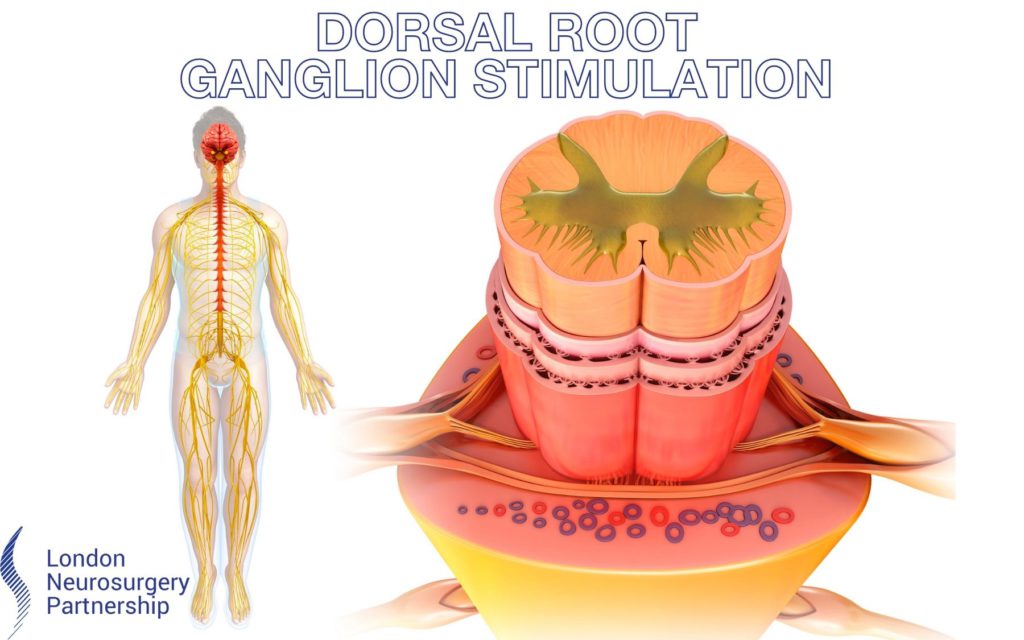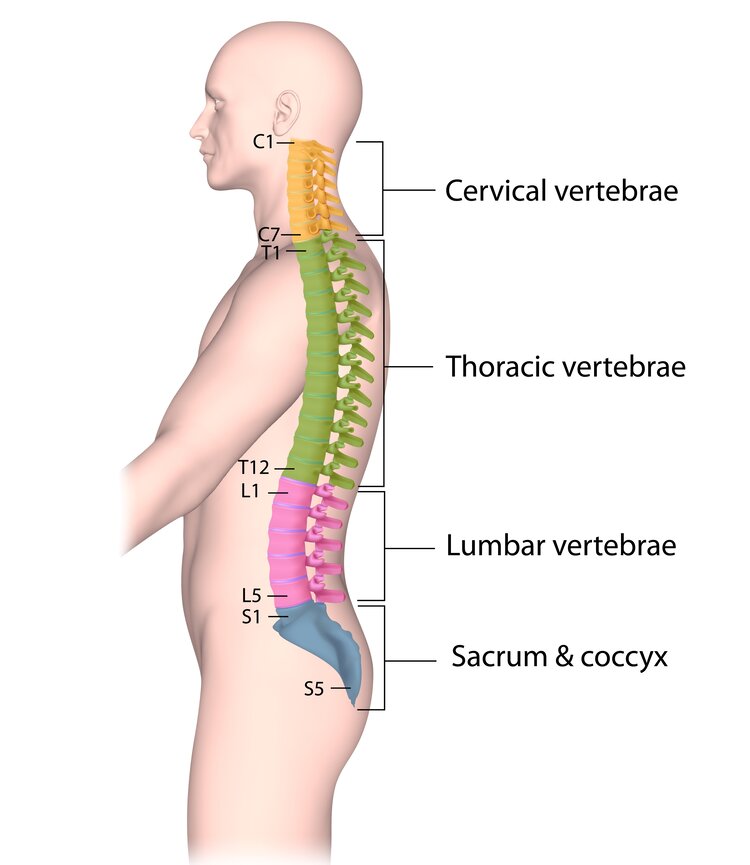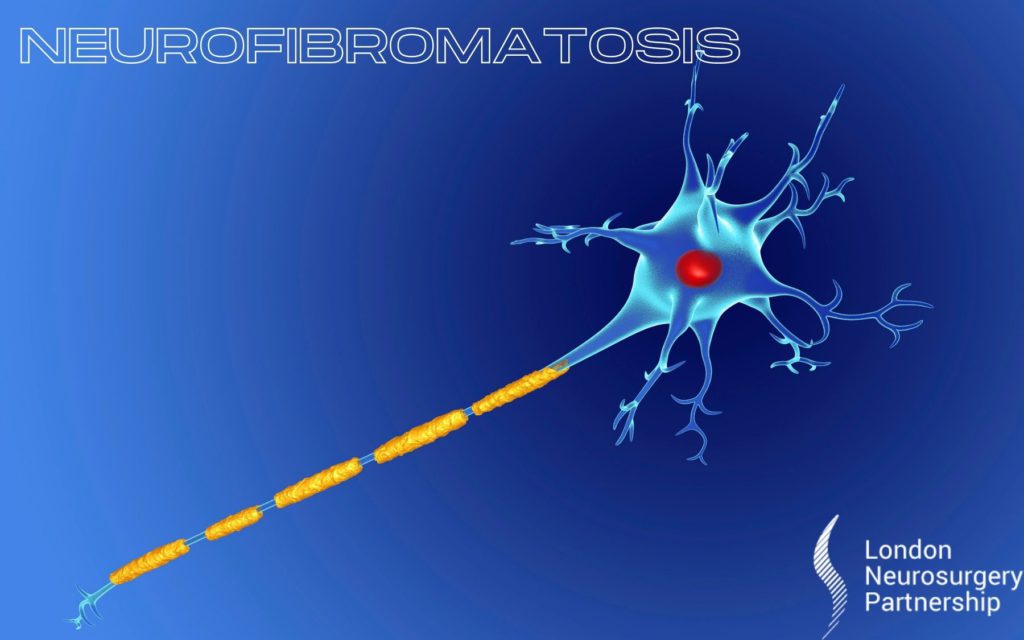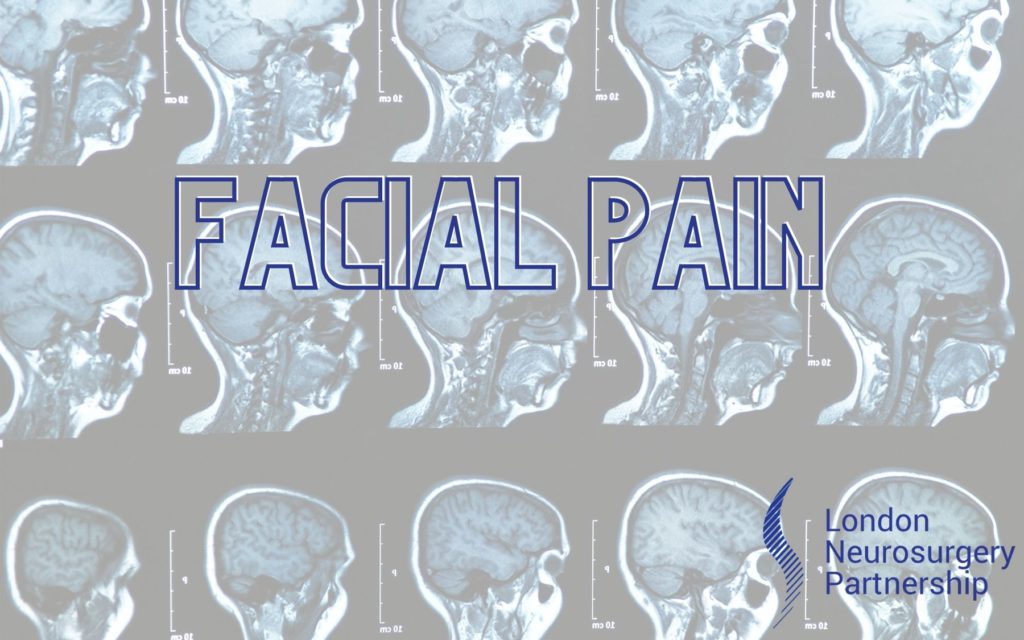
What is Dorsal Root Ganglion Stimulation?
The dorsal root ganglion is a small bundle of nerves involved with sending pain messages to your brain. The dorsal root ganglion acts like a traffic light; controlling when sensations can enter your spinal cord. There is a dorsal root ganglion at each level of your spine. Dorsal root ganglion stimulation uses equipment which is implanted in your spine, under your skin. This equipment sends mild electrical impulses to the area of a dorsal root ganglion in your spine. This stimulation can make the dorsal root ganglion create more ‘red lights’, which blocks pain signals from that area travelling to your brain. The tiny electrical impulses are sent through a lead implanted on the nerve attached to the dorsal root ganglion. It is powered by a battery (the size of a large matchbox) which is implanted under the skin on the left or right side of your tummy, above your hip and near your belly button, or on the upper part of one of your buttocks. This therapy is reversible, as it does not cause permanent changes or damage to the nerves.
What are the benefits of dorsal root ganglion Stimulation?
Dorsal root ganglion stimulation works directly in the area where the pain signals come from. Stimulation can be directed to specific areas where you feel pain, as you can have more than one lead placed at different levels in your spine (up to four leads per battery). Most people feel a gentle tingling in the area of their discomfort, which masks the pain.
Dorsal root ganglion stimulation can be used to help reduce the effects of problems such as post-amputation pain and pain disorders, such as complex regional pain syndrome (CRPS) and failed back surgery syndrome (FBSS).
Please note that dorsal root ganglion stimulation does not cure the source of the pain and that pain reduction varies from person to person. It may take a while for you to learn how to effectively control your pain using this device, but the aim is to achieve a 50-70% reduction in pain.
How is the procedure carried out?
The procedure may be carried out under general or local anaesthetic, and you will be lying on your stomach. Spinal stimulators are electrodes attached to a wire connected to an implantable electrical pulse generator. The electrodes will be placed on the outer covering of your spine (the dura), either through a small incision or via a large bore needle.
Sometimes there will be a trial of the implanted electrode, connected to a box outside of the body. If the pain is relieved, the battery powered generator will then be implanted in a pouch under the skin.
 What happens after surgery?
What happens after surgery?
When you have recovered from the surgery, your consultant will activate the device and give you a small hand control. Your consultant will monitor your progress and answer any questions you may have.
What are the risks?
As with all types of surgery, there is a risk of complications, these include;
- Infection in the area of the implanted leads or battery
- Bleeding from wounds or where we have given injections of anaesthetic/sedation
- Failure to relieve pain or an increase in pain
- No stimulation or irregular stimulation
- Headaches
- Allergic reaction to drugs given during the procedure
- Stimulation of the wrong area
- Stimulator device failure
This article is intended to inform and give insight but not treat, diagnose or replace the advice of a doctor. Always seek medical advice with any questions regarding a medical condition.





0 Comments